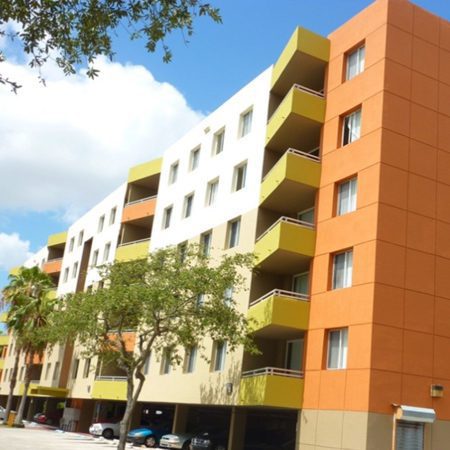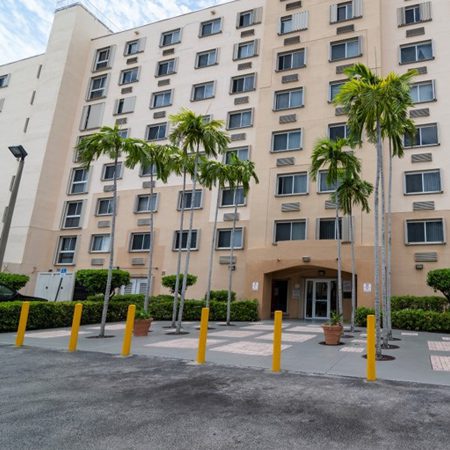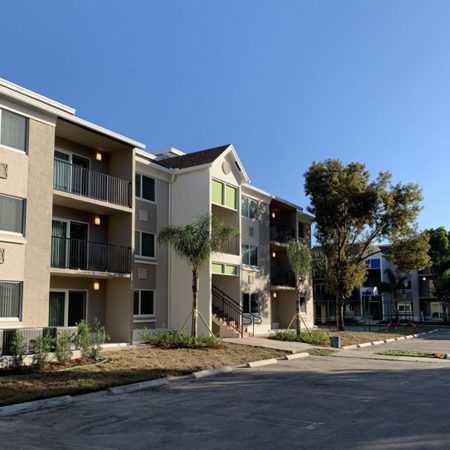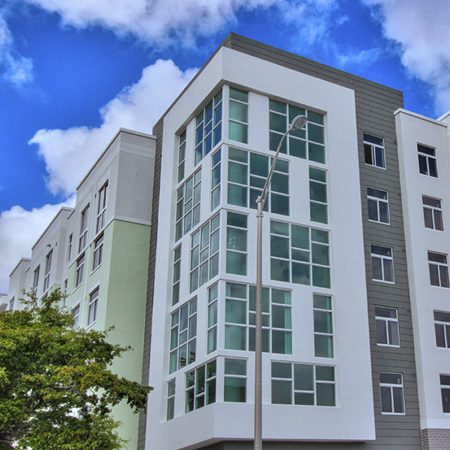Solving Housing Affordability Challenges
At TEDc, we believe that workforce housing is the key to transforming the economic outlook in communities of modest means—and helping individuals and families achieve their goals.
The State of Housing Affordability
Rents are skyrocketing for many reasons, including landlords seeking to recover from losses incurred during the COVID-19 pandemic. In our home base of Miami, median rent increased more than 27% between 2020 and 2021. And Miami isn’t unique: the same is happening around the country.
Even in wealthy urban areas, municipalities are unable to keep up with the demand for affordable housing. For every 29 affordable, available rental units, there are 100 extremely low-income households who are cost-burdened and in need of stable housing within their budget.
Yet affordable housing development meets resistance because of stereotypes about what it looks like, who will live there, and how it will affect the surrounding community.
Today’s Cost-Burdened Household
When we talk about below-market-rate housing, we often refer to “cost-burdened households.” These are families with very low to moderate incomes that spend upwards of 30% or more of their monthly income on housing.
This includes people who have traditionally benefited from affordable housing, including groups such as the elderly and the disabled, who live on a fixed income.
Now, with wage stagnation and rising housing costs, it also includes many people who have steady jobs, including those who were “essential workers” during the pandemic. Teachers, police officers, paraprofessionals, medical techs, nursing assistants, postal workers, retail and foodservice workers all regularly pay more than a third of their income in housing costs.
Even though they are vital to the success of our communities, current housing prices make it difficult for them to afford market-rate housing. This has led to a renewed focus on creating housing for working families, which we refer to as “workforce housing.”

37,000,000
households in the U.S. spend more than 30% of income on housing
17,600,000
households in the US spend more than 50% of income on housing
6,000,000
more rent-burdened households in 2019 than in 2000
Workforce Housing Builds Communities
Workforce housing and middle-income housing subsidies help improve outcomes in health and education, as well as create an economic engine that can drive growth and investment in the area.
When families have access to workforce housing, they no longer have to decide between food on the table or a roof over their heads. They can afford expenses they used to defer, such as healthcare or clothing and shoes. Workforce housing also makes it easier for adults to leave challenging situations, such as an abusive partner or an overcrowded home.

For children, workforce housing improves outcomes in terms of both education and health. Having a stable place to grow up, instead of moving from one home to the next, is associated with higher achievement scores. A safe place to live also makes children less likely to experience mental health issues resulting from poor housing conditions.
When families don’t need to worry about paying rent—or finding a new place to live—they can focus their energy on things that will help them progress in life. They can invest their time and money in getting additional education, looking for new job opportunities, and building their savings.
Workforce housing also represents a key step on the journey to homeownership. When families are no longer cost-burdened, they may be able to begin saving for their homeownership goals. In many of TEDc’s properties, they’re eligible for financial literacy classes and counseling to guide them.
And when people in essential job roles have a safe, affordable place to live, companies can feel confident in their decision to invest in local communities. They know that they will have a thriving workforce to draw upon.
Juanita’s Story
A longtime school district employee, Juanita lost her apartment when the building was remodeled and sold. After living with family, she and her partner were able to rent an apartment at Edison Terrace.
Several years later, she became a single mother with two young children. Her apartment at Edison Terrace gave the family a safe and familiar home base that they could afford on one income. Her children had easy access to their school, and the staff helped her whenever they could.
“As you go through life, it changes—and when you have small kids, you have to be delicate at maneuvering.”
Juanita’s children are now adults, and she credits Edison Terrace for giving her family a stable place to live as well as peace of mind when their circumstances changed.

Let’s build a lasting legacy together.
Start a conversation about partnering with TEDc.
Real Estate Portfolio

Edison Terraces
Residential

Edison Towers
Upcoming Developments

Edison Marketplace
Commercial

Edison Place
Upcoming Developments

Garden Walk
Residential

Tuscany Cove
Residential
William’s Story
William was searching for a safe place where he and his daughter Sharkie could live. At first, they planned to stay only a year at Edison Terrace, but they quickly fell in love with the building and its convenient location near I-95 and major health systems—not to mention how affordable it was.
When their needs changed due to a cancer diagnosis, staff helped them secure an apartment in Edison Place that would work for him, his daughter, and his young granddaughter. He says that the staff has consistently been understanding and supportive, going out of their way to ensure that the family takes advantage of everything the apartment community has to offer.
Today, William remains at Edison Place. He appreciates having a welcoming, affordable home for his family while he continues his treatment.

